Poodles are a breed celebrated not only for their intelligence and agility but also for their diverse range of coat colors. This distinctive breed, available in sizes ranging from toy to standard, offers potential owners a spectacular palette of color variations that are both rare and captivating. Each color not only enhances the breed’s aesthetic appeal but can also influence grooming needs and visibility in competitions. The color of a Poodle’s coat is determined by genetics, with certain colors being dominant or recessive, and some being linked to unique health concerns. Whether a show dog or a family pet, the Poodle’s coat color can significantly impact its presentation and the owner’s preference. This article explores seven stunning color variations of Poodles, illustrating the beauty and unique characteristics of each.
1. Black
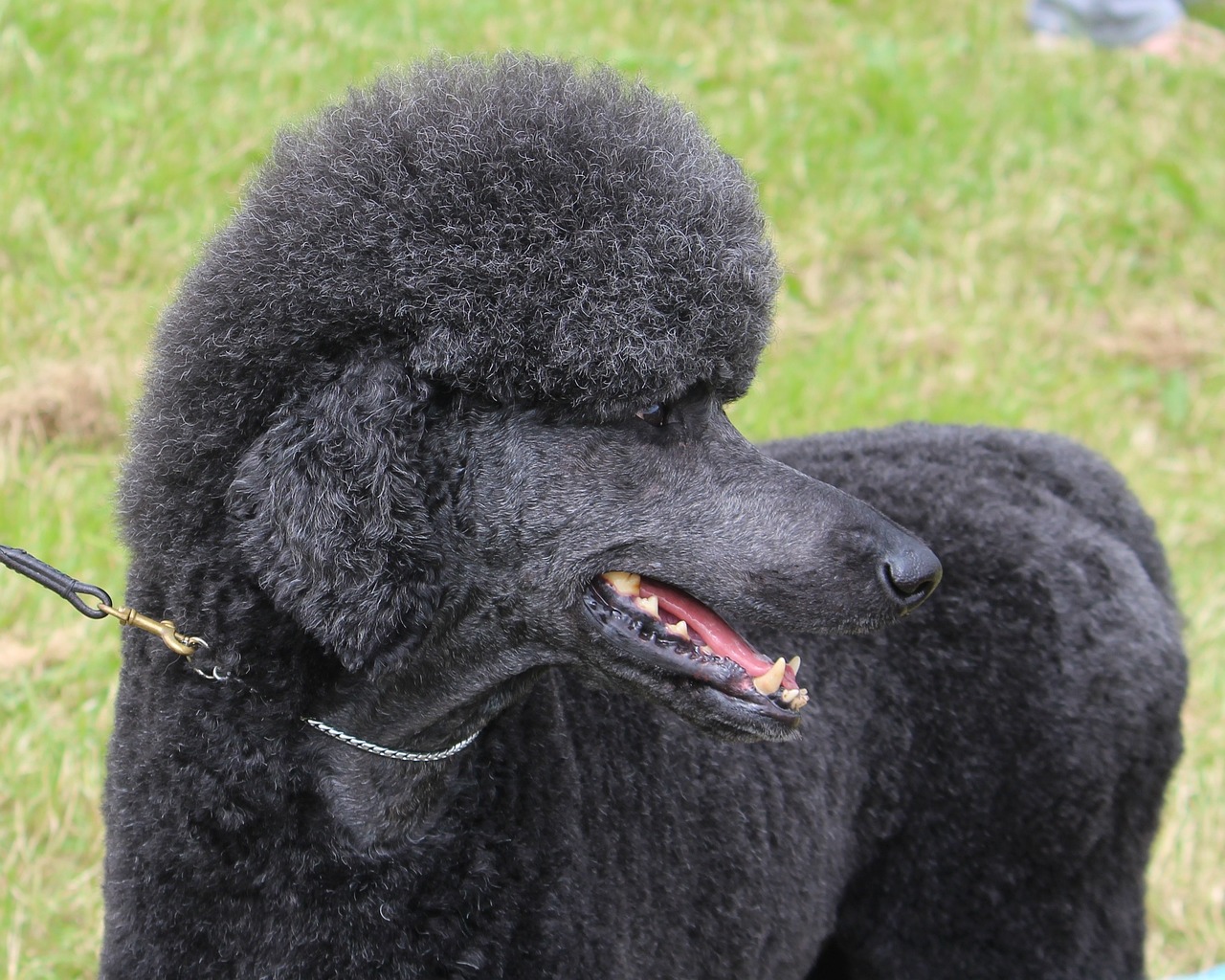
The black Poodle is one of the most common yet striking colors. This deep, rich color showcases the Poodle’s elegant features and curly coat beautifully. A true black Poodle should have a jet-black coat without any traces of silver or blue, which can sometimes appear as the dog ages. The skin under the coat should also be dark. Black Poodles are often favored in the show ring due to their lustrous coats which provide a stunning contrast against the lighter-colored competition rings and their eyes and nails are also dark, enhancing their sophisticated look. Grooming a black Poodle requires frequent bathing and conditioning to maintain the coat’s sheen and prevent it from appearing dull.
2. White
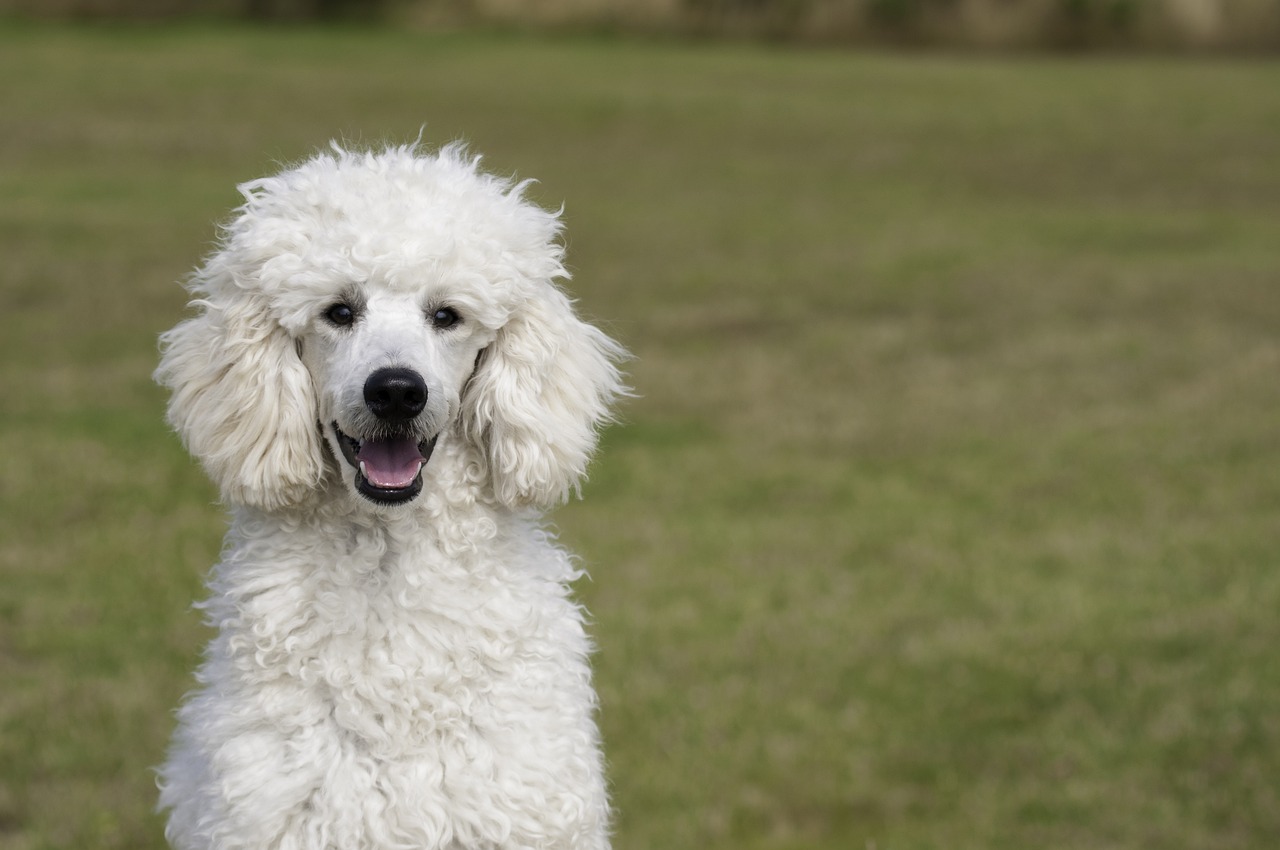
White Poodles are a classic and sophisticated choice, exuding a regal presence. They should possess a pure, snowy coat that is free from any yellow or cream tinges. White Poodles are particularly stunning in the sunlight, as their coats can appear bright and gleaming. However, keeping a white Poodle’s coat pristine can be challenging, requiring regular grooming to prevent staining and discoloration from outdoor activities. Moreover, owners should be vigilant about skin health, as white Poodles can be prone to sunburn.
3. Red
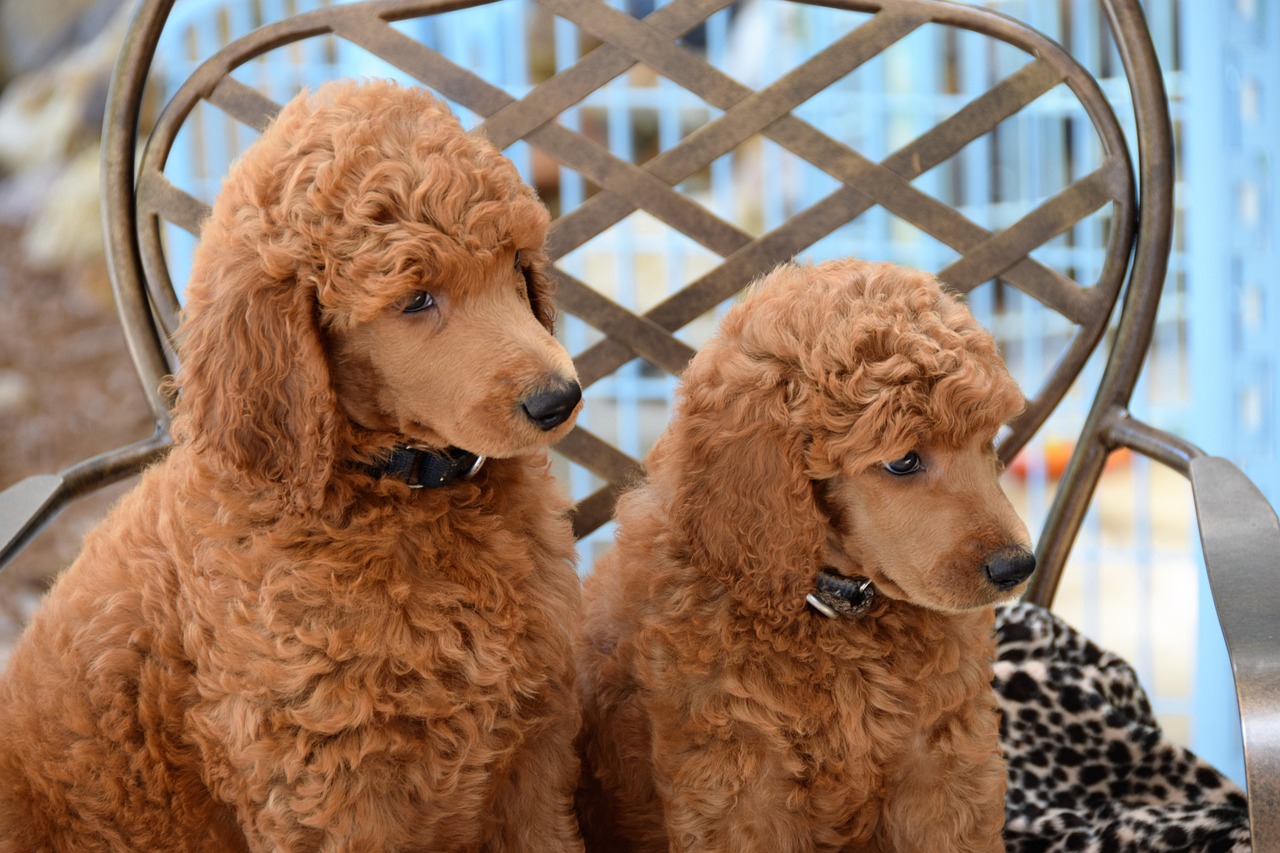
Red Poodles carry a rich, vibrant coat color that ranges from light apricot to a deep, rusty hue. This color is relatively rare and was only officially recognized a few decades ago. The intensity of the red can fade over time, so breeders often select for darker shades to maintain the richness of the coat in offspring. Red Poodles can be particularly striking, especially when their lush, voluminous coats are well-groomed, giving them a fiery, eye-catching appearance that is hard to overlook at dog shows.
4. Chocolate

Chocolate Poodles have a warm, deep brown color that can range from a light milky tone to a dark, almost black coffee shade. The chocolate color is due to a recessive gene, making it less common than black or white. Chocolate Poodles may have lighter brown eyes that complement their coat, offering a softer look compared to the more intense gaze of black Poodles. They may also have lighter noses, eye rims, and foot pads, which can be a beautiful contrast to their darker fur.
5. Silver
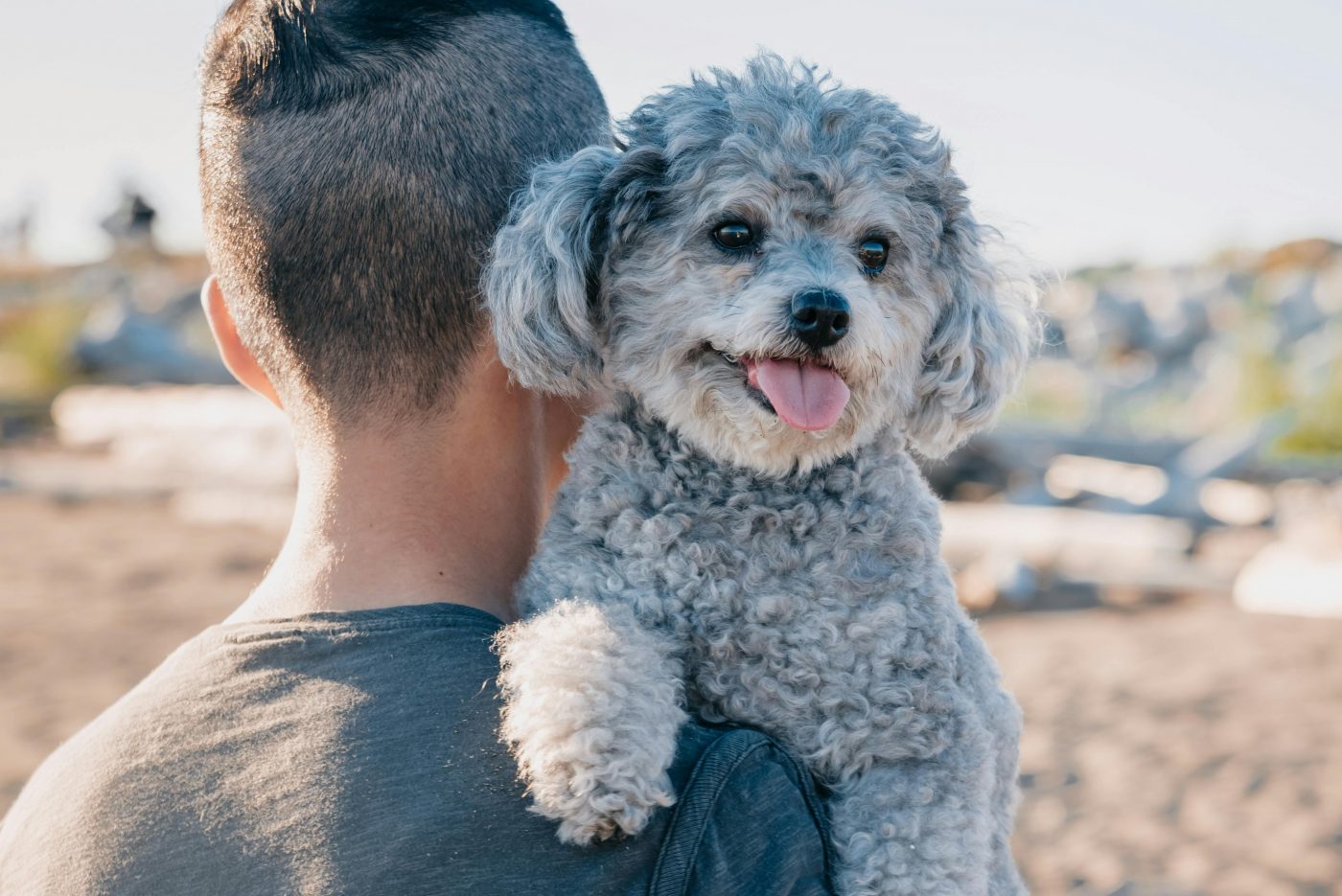
Silver Poodles are born black and gradually lighten to a shiny gray, a process that can take up to two years to complete. This fascinating color change is one of the hallmarks of the breed. Silver Poodles should have an even coat color, with no patches or other colors mixed in. Their elegant, shimmering coats make them particularly popular in the show ring. To maintain the unique silver sheen, they require specific grooming techniques and products that enhance the color rather than diminish it.
6. Blue
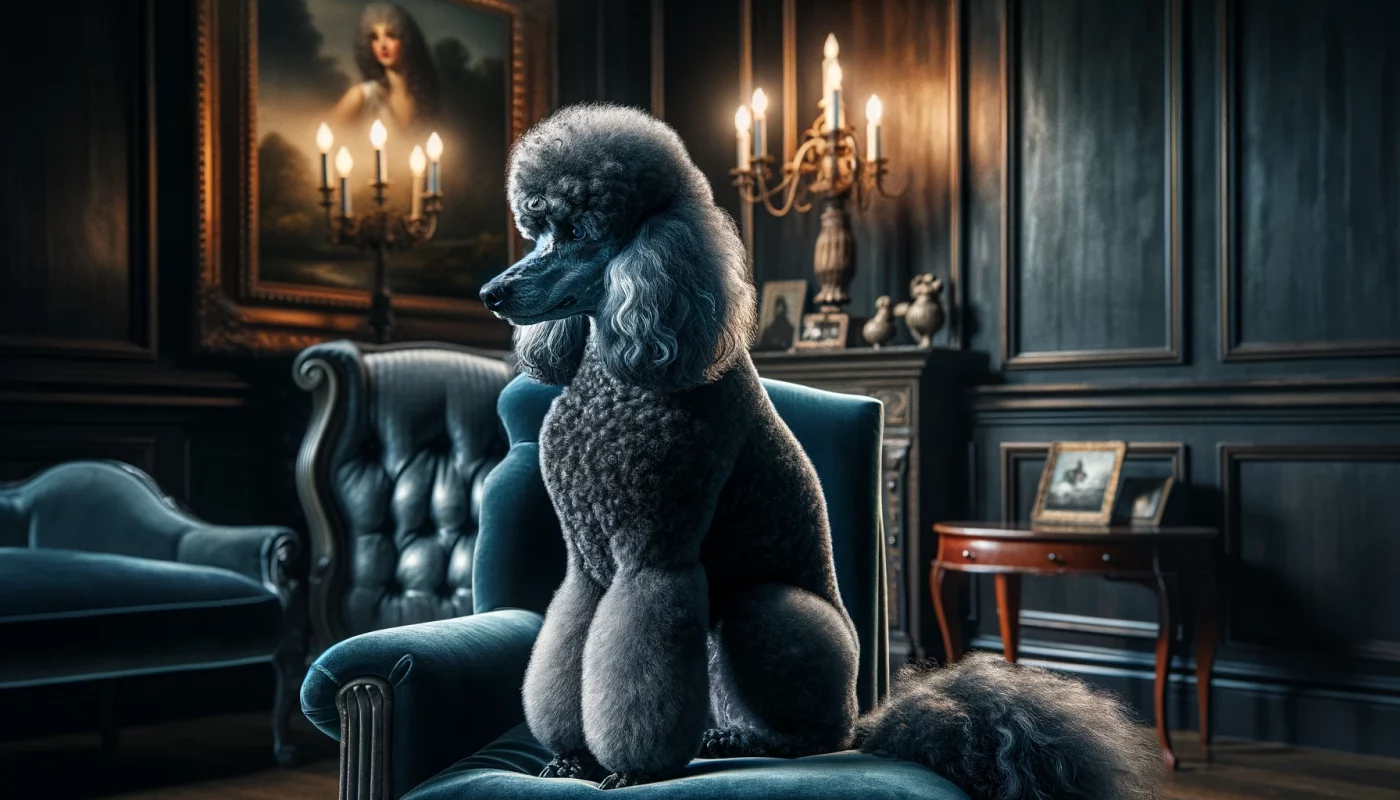
Blue Poodles are a unique and uncommon color variation. They are not a true blue but have a deep, steel-gray hue that can sometimes be mistaken for black. Like silver Poodles, blue Poodles are born black, and their color fades as they grow older, typically settling into its final shade by their second birthday. Blue Poodles have a certain allure due to their rare and mystical appearance, often appearing even more distinguished as they age.
7. Parti

Parti Poodles have a coat that is at least 50% white with patches of any other solid color. The party color pattern is striking and offers a dramatic contrast between the white and the second color, which can be black, red, chocolate, or any solid. This pattern is adored by many for its uniqueness and is becoming increasingly popular in both show and pet homes. Parti Poodles require the same grooming as solid-colored Poodles but may need additional care to ensure that both colors in their coats are well-maintained and vibrant.
In conclusion, the Poodle’s diverse range of coat colors not only adds to the breed’s wide appeal but also highlights its versatility and adaptability in various roles, from show dog to beloved pet. Each color and pattern brings its own set of challenges and rewards in grooming and care, making the Poodle a fascinating breed for enthusiasts and casual dog lovers alike. Whether adorned in the classic elegance of a black coat or the rare beauty of a blue hue, Poodles continue to enchant and captivate people around the world with their stunning appearance and charming dispositions.
Frequently Asked Questions About Poodle Colors
1. What is the most common color for Poodles?
The most common color for Poodles is black. Black Poodles have a rich, deep color that covers their entire body uniformly. This color is popular due to its striking appearance and the ease with which it can be maintained compared to lighter colors. Black Poodles also tend to have very dark eyes and black noses, which complement their sleek fur. Regular grooming is essential to maintain the luster of their coat, as black fur can show dust and dander more visibly than lighter colors.
2. Are white Poodles rare?
White Poodles are not rare but are highly sought after, especially in show circles where their striking pure white coat can stand out. Maintaining a pure white coat requires diligent grooming as it can easily show stains and dirt. White Poodles need regular baths and careful attention to prevent discoloration, especially around the eyes, mouth, and paws.
3. Can Poodles have two different colored coats?
Yes, Poodles can have two different colored coats, commonly referred to as the party pattern. Parti Poodles have a coat that is at least 50% white with patches of any other solid color like black, red, or blue. This pattern is recognized and accepted in many kennel clubs around the world. Parti Poodles are quite popular due to their unique and striking appearance, but they require the same amount of grooming as solid-colored Poodles.
4. What is a phantom Poodle?
A phantom Poodle is not a ghost but a color pattern! This term refers to Poodles that have a specific pattern of coloring similar to that of a Doberman Pinscher. They have a solid base color like black, chocolate, or silver, with distinct markings of a different color on specific areas of the body: above the eyes, on the sides of the muzzle, on the throat, on the forechest, and legs. This rare and distinctive pattern is genetically inherited and has become increasingly popular among Poodle enthusiasts.
5. What causes silver Poodles to change color?
Silver Poodles are born black and gradually fade to their mature silver color, usually by the age of two. This color change is caused by a progressive greying gene that causes the fur to lighten over time. The specific timing and pattern of color change can vary from one silver Poodle to another. Owners of silver Poodles often notice the most significant color change after the first few haircuts.
6. How do you maintain the color of a red Poodle?
Maintaining the vibrant color of a red Poodle requires some specific care to prevent fading. Sun exposure can bleach the red color, so limiting your Poodle’s time in direct sunlight and using canine sunscreen can help maintain its rich hue. Additionally, using color-enhancing shampoos and conditioners made specifically for red coats can help preserve the vibrancy of the fur. Regular grooming and proper nutrition also play critical roles in keeping the coat healthy and the color bright.
7. Are blue Poodles actually blue?
Blue Poodles are not truly blue; they have a very dark grey coat that may appear blueish. This color is a dilute form of black and is due to a specific gene. Blue Poodles are born black and lighten over the first two years of their life. The final blue color is a deep, slate grey that can be quite striking. Because this is a less common color, blue Poodles can be a rarer find in the Poodle community.
8. What genetic factors influence Poodle coat colors?
Poodle coat colors are influenced by various genetic factors, including the presence of specific genes like those for melanin production and distribution. For example, the gene that causes black and brown colors is dominant, which is why these colors are more common. Recessive genes can cause lighter colors like cream or silver. Additionally, the gene for the party color pattern causes the distinctive multi-colored coats seen in some Poodles.
9. Can a Poodle’s coat color predict its health?
While coat color in Poodles does not typically predict health, some genetic color combinations can be linked to health issues. For example, Poodles with predominantly white coats can sometimes be prone to deafness, particularly if they lack pigment in their inner ears. Generally, however, a Poodle’s coat color has more to do with appearance than health, and Poodles of all colors can be equally healthy if bred responsibly.
10. Do Poodle puppies change color as they grow?
Yes, some Poodle puppies can change color as they grow, particularly those with fading colors like silver, blue, and cafe-au-lait. These Poodles are born with a darker coat that lightens over time, a process that can take up to two years or more. Regular grooming and clipping can influence the appearance of their coat as it changes. Observing this color evolution can be quite fascinating for Poodle owners.
 Toledo, United States.
Toledo, United States.